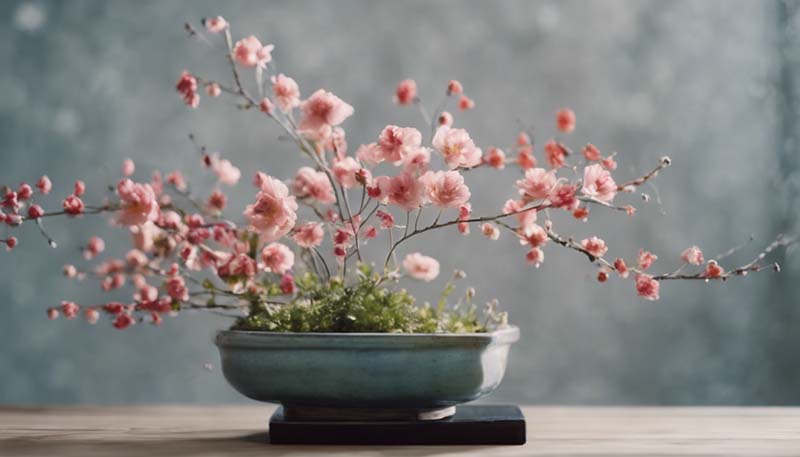Seasonal Flower Elegance: The Art of Ikebana with Seasonal Blooms
Arrangements | 2024-05-16
Ikebana, the traditional Japanese art of flower arrangement, has been practiced for over 500 years. It is a form of expression that emphasizes harmony, balance, and the beauty of nature. One of the most appealing aspects of Ikebana is its use of seasonal flowers and materials, which not only reflects the changing seasons but also adds a unique charm to each arrangement.
**The Philosophy Behind Ikebana**
Ikebana is more than just a decorative art; it is a spiritual practice that seeks to capture the essence of life and the natural world. Each arrangement is a living piece of art, a moment captured in time, reflecting the beauty and transience of life. The three main branches in an Ikebana arrangement represent heaven, earth, and humanity, symbolizing the interconnectedness of all things.
**Choosing Seasonal Blooms**
The choice of flowers and materials is crucial in Ikebana. Each season offers a variety of blooms that can be used to create stunning arrangements. Here are some suggestions for each season:
* **Spring**: Cherry blossoms, azaleas, and peonies are popular choices for spring arrangements. They symbolize renewal and the beauty of new beginnings.
* **Summer**: Hydrangeas, lotus, and irises are perfect for summer arrangements. They represent the vitality and exuberance of the season.
Advertisement
* **Autumn**: Chrysanthemums, maple leaves, and cosmos are excellent choices for autumn arrangements. They reflect the changing colors and the beauty of the harvest season.
* **Winter**: Hellebores, winter jasmine, and pine branches are ideal for winter arrangements. They symbolize resilience and the quiet beauty of the cold season.
**Creating an Ikebana Arrangement with Seasonal Blooms**
Creating an Ikebana arrangement with seasonal blooms is a meditative process that requires patience and attention to detail. Here are some steps to get you started:
1. **Choose Your Vase or Container**: The container is an essential part of the arrangement. It should complement the flowers and materials you have chosen.
2. **Select Your Flowers and Materials**: Choose flowers and materials that are in season. Consider the colors, shapes, and textures of the blooms to create a balanced and harmonious arrangement.
3. **Prepare Your Materials**: Trim the stems at an angle to help them absorb water. Remove any leaves that would be below the water line to prevent bacterial growth.
4. **Arrange the Main Branches**: The main branches in an Ikebana arrangement are the Heaven, Earth, and Humanity branches. The Heaven branch is the tallest, the Earth branch is the widest, and the Humanity branch is the shortest.
5. **Add the Seasonal Blooms**: Once you have arranged the main branches, add the seasonal blooms. Be mindful of the placement and balance of each flower.
6. **Add Greenery and Fillers**: To complete the arrangement, add greenery and fillers. These add depth and texture to the arrangement.
7. **Step Back and Assess**: Once you have finished arranging, step back and assess your work. Make any necessary adjustments to ensure balance and harmony.
**Conclusion**
Ikebana is a beautiful and meditative art form that allows you to connect with nature and express your creativity. By using seasonal blooms, you can create unique and stunning arrangements that reflect the changing seasons. Whether you are a beginner or an experienced Ikebana artist, there is always something new to learn and explore in this ancient art form.

Comments